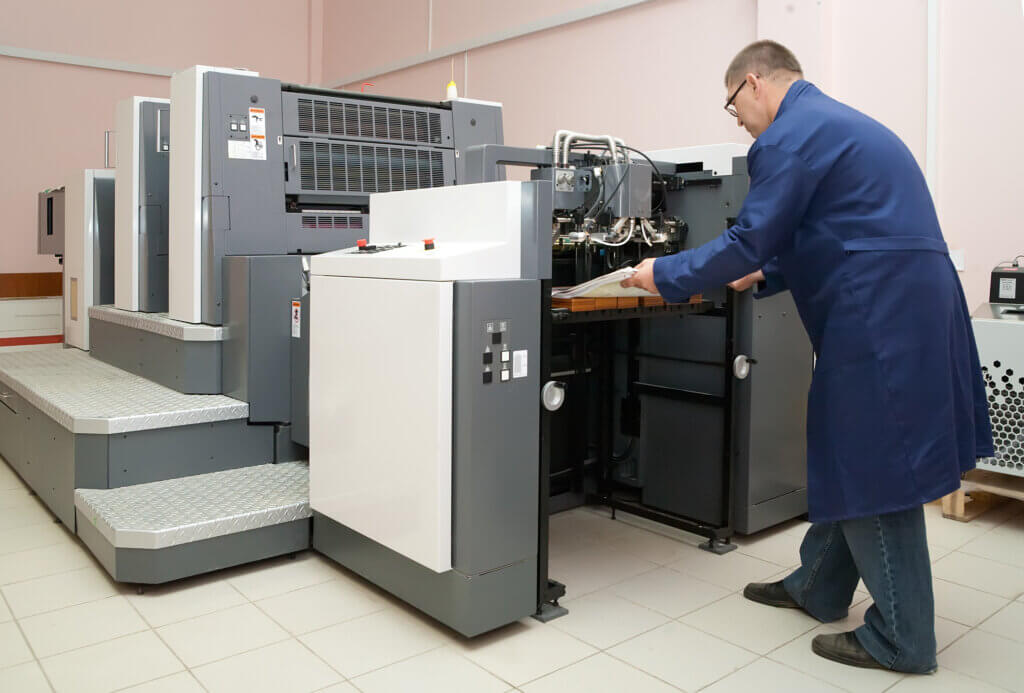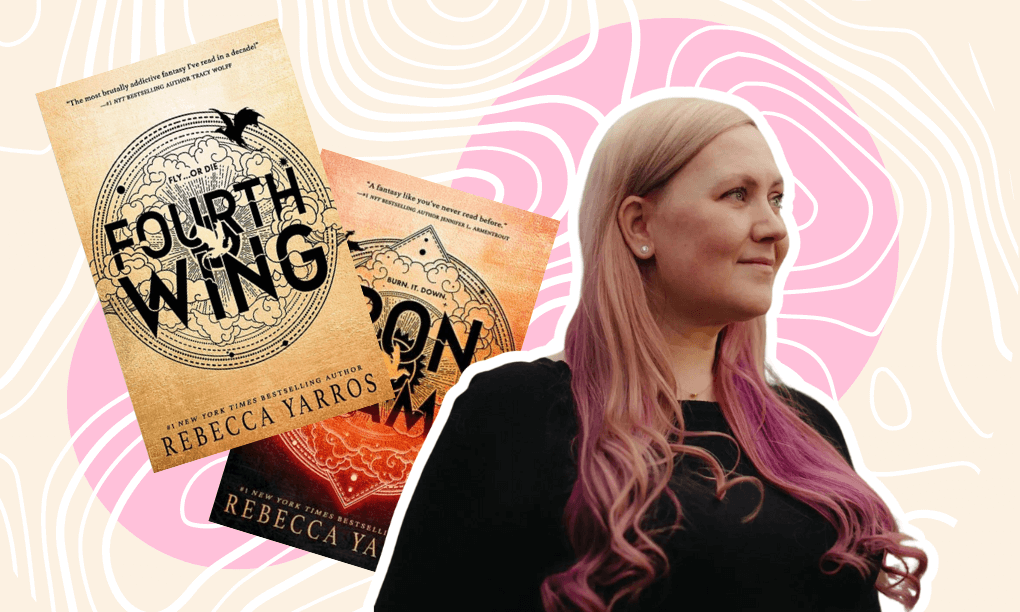We have become quite conscious about the impact of our daily activities on the ecosystem: we are trying to implement new ways to reduce our footprint, plastic usage, natural resource extraction, and so on. But what is the situation with sustainable book publishing? Are books and college textbooks sustainable at all? Or should we all switch to digital alternatives?
We will explore in more detail if it is possible to maintain an eco-friendly printing industry. The publishing industry is one of the significant consumers of paper. Therefore, the question about the sustainability of paper manufacturing comes to the foreground. But it’s not the only issue that eco-friendly publishers have to deal with. Can the whole process of book production be more eco-friendly? What are the major challenges, and how publishers react to them? Should we adopt more sustainable reading habits?
Challenges of Sustainable Book Publishing
Deforestation
The contribution of book publishing to this problem is the most pressing problem. However, the paper industry develops multiple sustainable initiatives: using recycled raw materials, minimizing waste, conserving water, responsible forestry, and other measures. According to the latest statistics, more paper and cardboard is being recycled than landfilled, which is a considerable development towards lessening the footprint of paper manufacturing. But then the question of individual choice comes to the foreground: is this recycled and sustainably produced paper being used for printing our textbooks and favorite novels?
Use of non-renewable resources
Book production, like any other manufacturing process, also requires oil and gas to run the operations.
Use of toxic elements
Letters do not appear on paper by magic — they are printed, and the traditionally used ink contains toxic elements. These are heavy metals, non-renewable oils, carbon, and other chemicals. The amount of heavy metals in ink is defined by governmental regulations, so the ink is not life-threatening. But are there more sustainable alternatives?
Nowadays, there are several types of eco-friendly inks that contain vegetable oils or use more sustainable ingredients as pigment instead of carbon (e.g., algae ink).
Workforce
Guaranteeing safe working conditions and fair pay is also a part of the sustainability process. People involved in the publishing process (including authors) should be assured of equitable conditions.
Distribution and shipping
Sustainable supply chain management is critical since the environmental footprint of shipping is enormous. One should consider not only the transportation but also the packaging since it can contain many plastic elements.
Overproducing
It is a critical problem for book publishing. In 2006 in the US, around 4.15 billion books were produced. But only ca. 3.09 billion books were sold—the discrepancy is dramatic. These numbers are outdated, but one might expect that the trend for overproducing still governs our markets.
Why do publishers print so many books as if they can’t predict the demand accordingly? The bigger is the print run, the lower are the costs of producing a single copy—while the selling revenues are higher. The gain from this formula is so luring that many publishers go for a big print run, risking not selling all of the copies. Moreover, some publishers—especially in the textbook industry—artificially produce new editions to get more revenues, while older editions become irrelevant. In the end, many books “die” unsold.
Stripped books
These low-in-demand copies are either heavily discounted or withdrawn from circulation by the publisher. In the latter case, distributors and booksellers have to prove that the copies are indeed unsold by sending them back to the publisher. Since shipping costs for bulky items like books are high, distributors intentionally damage books and ship only the covers as proof. The books stripped of cover are then pulped and recycled or landfilled—a horrifying cycle. Only a small amount of stripped books end up on flea markets.

Methods of Sustainable Book Publishing
According to the Book Industry Environmental Council’s report from 2013, publishers are taking steps to make their industry more eco-friendly. Publishing houses have committed to use less energy and acquire recycled paper.
“The results indicate steady and continual improvement across a broad range of environmental metrics including recycled and certified fiber and the number of companies in the industry with environmental policies.”
Book Industry Environmental Council, 2013
Since publishers often outsource the printing itself, they can choose sustainable companies. Publishers have an opportunity to insist on using recycled and sustainable paper for their editions. A report from 2016 indicates a somewhat worrisome trend: there is supposedly a decline in usage of FSC certified papers and recycled fiber in book paper.
The question, however, is not only about using recycled paper. Paper’s lifecycle can handle up to 7 recycling, and fresh fiber is still needed to produce any kind of paper. Therefore, it is also essential to choose paper companies that ensure sustainable forestry and energy usage.
Other methods include decreasing the book weight (to minimize the shipping footprint). These are paper and binding types that define the weight of each copy. Another tool is brightness reduction.
Print-on-demand is the most sustainable initiative that provides an answer to the problem of overproducing and pulped books. Using this process, publishers print only the amount of books that were actually pre-ordered and bought without producing an excessive amount of copies. However, this operational system does not allow to keep the cost of a copy low enough (and, therefore, the revenue is lower)—profit-oriented publishers rarely adopt this print-on-demand strategy.
Further mechanisms that publishers can use are sustainability assessment programs and tree planting initiatives, for example. Moreover, there is a fair amount of national and international non-profit organizations that promote sustainability standards in publishing and paper manufacture: Sustainable Forestry Initiative, Forest Stewardship Council, and Green Press Initiative, among others.

Are E-books an Environmentally Friendly Solution?
On the one hand, e-books seem to be a reasonable solution. E-publishing does not require many resources (both physical and financial); there is no associated impact of shipping and distribution. Readers, on the other hand, can avoid buying many physical books.
On the other, we forget about e-waste and the resources required to sustain our devices (e.g., electricity) and their constant access to the internet and cloud storage. Every time we read from our phone or tablet, a certain amount of non-renewable resources is used. Unlike e-books, physical books do not require additional resources to be read (except for the reading light).
Moreover, e-publishing does not always provide fair remuneration to authors, diminishing the authorial role in book-making. Franklin Foer in World without Mind: The Existential Threat of Big Tech, notes that “By unilaterally setting the price of the e-boo at $9.99, far lower than paper, [Jeff] Bezos falsely implied that the cost of producing a book resided in printing and shipping, not in intellectual capital, creativity, and years of effort” (p. 91). Therefore, consider twice if it is actually advantageous to turn entirely to e-books.

Practices of Sustainable Reading
Environmental concerns should also affect our customer choices. As readers, we can look for books from sustainable publishers (e.g., the FSC logo on the book cover can help you recognize that the publisher used sustainable paper) and choose to use print-on-demand houses.
Buy Used Books
Try to buy used books—it saves the planet and your finances as well. Browse through local second-hand stores for some gems. Alternatively, turn to online stores: although renting and buying used books online adds up shipping to the picture, the chances to rent or buy used books you need are much higher. Moreover, you can always use sustainable packaging methods to reduce your footprint.
If you are looking for used textbooks, BooksRun has a great variety of college books. Moreover, you can become a part of the Let’s Go Green Together loyalty program: you contribute to planting trees through ONETREEPLANTED and receive eco-friendly products. You can also rent textbooks with BooksRun, which is another sustainable choice.
Use Local Libraries
Libraries are not the remnants of the past centuries—you can easily rent books and e-books from there. It is cost-effective and environmentally-friendly. Also, get into a habit of exchanging books with your friends and neighbors or participate in local book exchanges.
Reuse or Recycle Old Books
When you don’t need a book anymore, you should recycle or give it away. Either donate it to a library or sell it back to an online store. Some of your books are more valuable than you think, especially textbooks! Try selling textbooks for a buyback to BooksRun: you will give a second life to an old copy of yours, help other students to get their learning material cheaper, and also earn some cash.
As for digital books, there is no right or wrong—evaluate the consequences and decide yourself. You might also consider the effectiveness of reading and studying from physical copies and e-books.
In the end, sustainable reading is possible, and our choices can affect the future of the printing industry too. Let’s Go Green Together!


